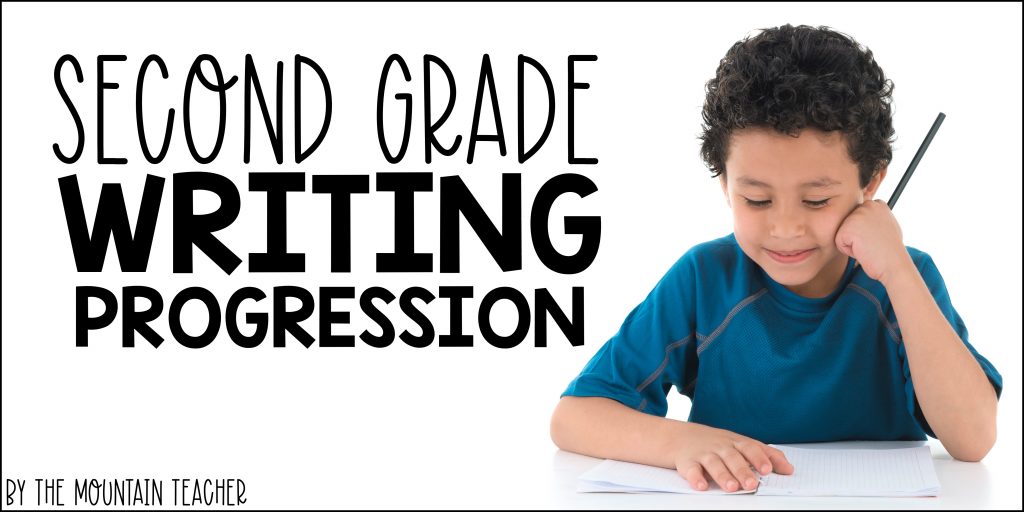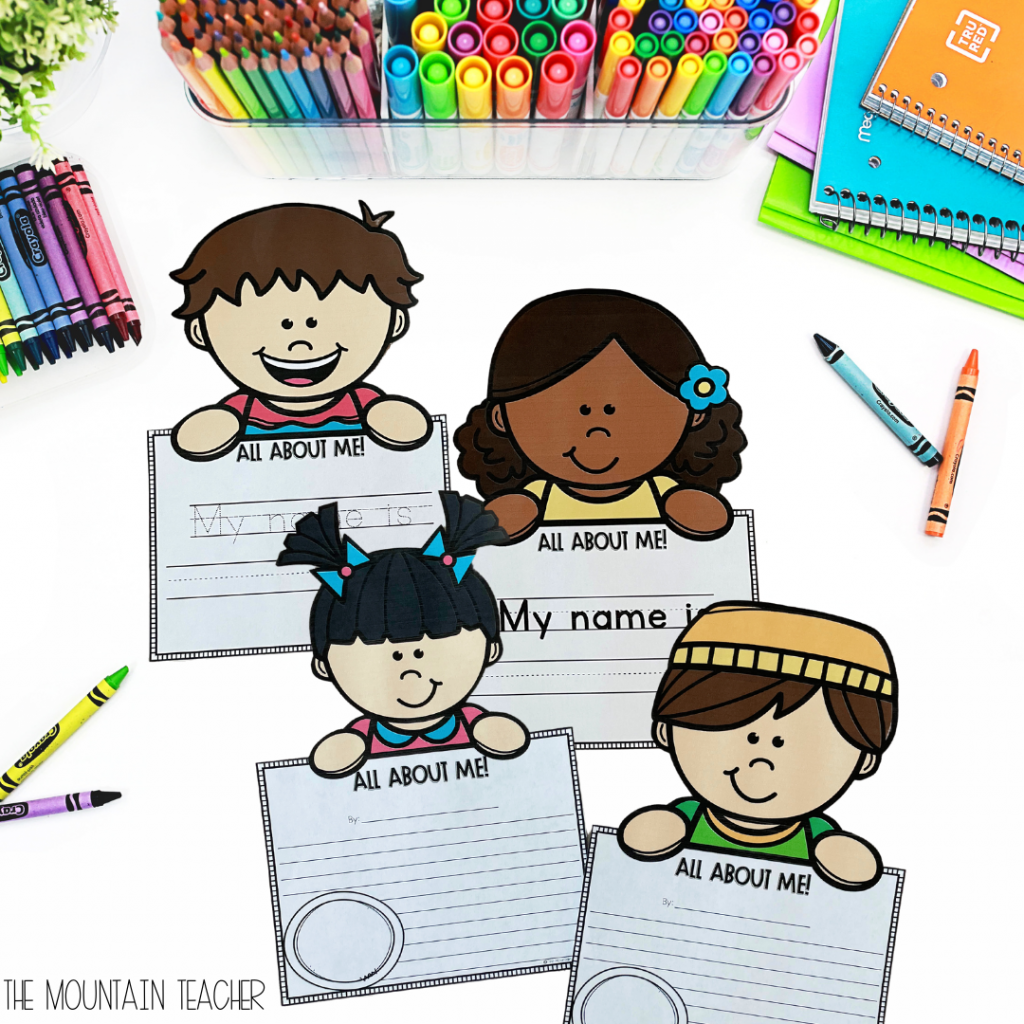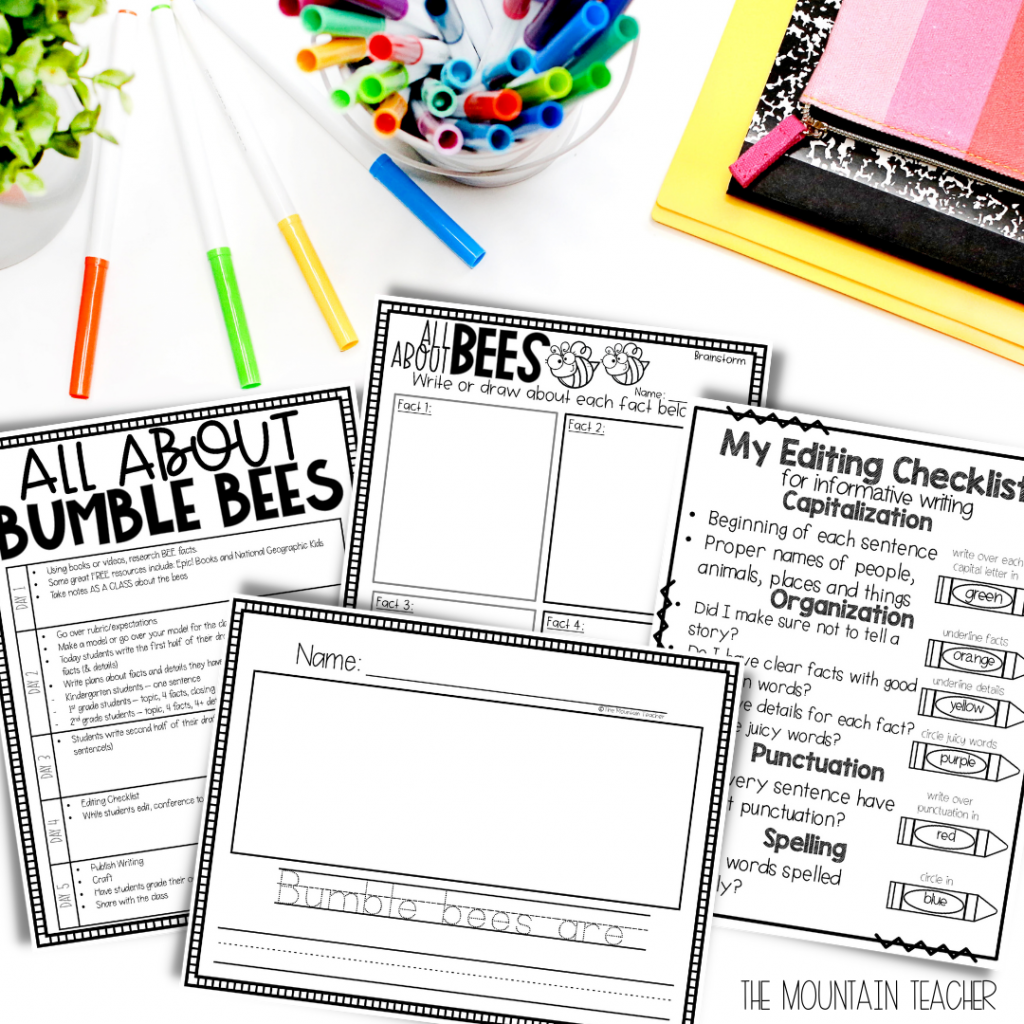Take a Look at 2nd Grade Writing Progression

Writing is TOUGH. Teaching writing can be even tougher. One of the more difficult parts of teaching writing is knowing exactly how much and what a student should be writing.
It is important to note that while we know what a second grader needs to be writing by the end of the year from the standards, you need to remember that like all skills, writing is a progression.
Therefore, it is important to keep the progression of second grade writing in mind when planning for students.
Beginning of the Year
At the beginning of the year, you can expect students to be writing more like first graders. In first grade, students will be writing approximately five or six sentences.

First graders typically write:
- Topic Sentence
- Event/Fact/Reason (depending on genre)
- Event/Fact/Reason (depending on genre)
- Event/Fact/Reason (depending on genre)
- Event/Fact/Reason (depending on genre)
- Closing Sentence or Thought
For the first few weeks of school, this is what is appropriate to expect of your second graders, especially during unassisted writing time. Students also need to work back up to having writing fluency, which might have gotten fatigued when not practicing during the summer months.
Middle of the Year
After a few weeks, it is important to get students used to adding detail sentences into their writing. Typically, I start slow and have them add one detail sentence after each event/fact/reason sentence. We do this for a few months, until students really understand how to add a detail that is not another event/fact/reason, but rather a sentence that truly supports the previous sentence.

You can practice adding a variety of details such as dialogue, embedded definitions, elaborating a thought, or making a reason more convincing. Remember, quality is more important than quantity in this scenario.
Most second graders typically write:
- Topic Sentence
- Event/Fact/Reason (depending on genre)
- Detail Sentence
- Event/Fact/Reason (depending on genre)
- Detail Sentence
- Event/Fact/Reason (depending on genre)
- Detail Sentence
- Event/Fact/Reason (depending on genre)
- Detail Sentence
- Closing Sentence or Thought
End of the Year
At the very end of the year, either some or most of your class will be ready for paragraph writing.
Remember, this is not technically required until third grade, so some students might not get there and it is a-okay. Also, remember to emphasize to students that quality of sentences is much more important than quantity. It is better to add vivid details than redundant or dull details.
The end of the year is a great time to also focus on the quality of a story being told. You can add in skills like working on adding a problem and solution, or embedding complex definitions or other text features into informative pieces. In opinion writing, you can focus on writing letters and using different persuasive elements.

The format for the end of the year or for third graders is:
- Topic Sentence (isolated into a “paragraph”)
- Body Paragraph (Event/Fact/Reason sentence, followed by 2-3 supporting detail sentences)
- Body Paragraph (Event/Fact/Reason sentence, followed by 2-3 supporting detail sentences
- Body Paragraph (Event/Fact/Reason sentence, followed by 2-3 supporting detail sentences
- Body Paragraph (Event/Fact/Reason sentence, followed by 2-3 supporting detail sentences
- Closing Sentence or Thought (isolated into a “paragraph”)
Graphic Organizers and Differentiation
Because the progression of second grade writing builds upon itself so progressively, it is important to use consistent and clear graphic organizers with students. This really allows them to visualize and understand the degrees of the writing process, how writing changes and grows over time, and how different genres relate to each other.
Using clear graphic organizers also allows you to very easily differentiate for your students. Some students might be working on just event sentences, some might need to be working on just one detail, and some might be ready for paragraphs all in the same project. Make sure to find resources that will fit your class accordingly.

Final Thoughts
It is so important to remember that the progression of second grade writing will look different for every classroom and every student.
Some students might be working at the beginning level for much longer than others, and some students might be ready for the ending level much sooner.
It is therefore important to differentiate and spend an appropriate amount of time working in small groups with your students.
If you are looking for year long resources that will work with your second graders, be sure to check out my entire year of lesson plans, activities and differentiated graphic organizers.
*Disclosure: I only recommend products I would use myself and all opinions expressed here are our own. This post may contain affiliate links that at no additional cost to you, I may earn a small commission.
